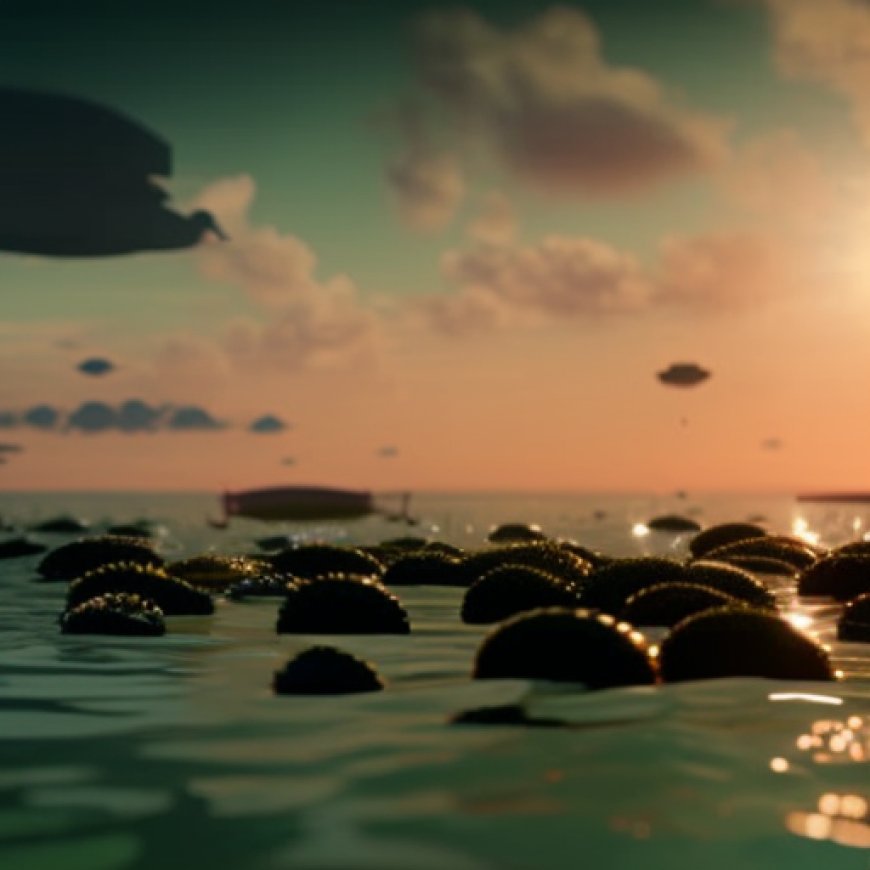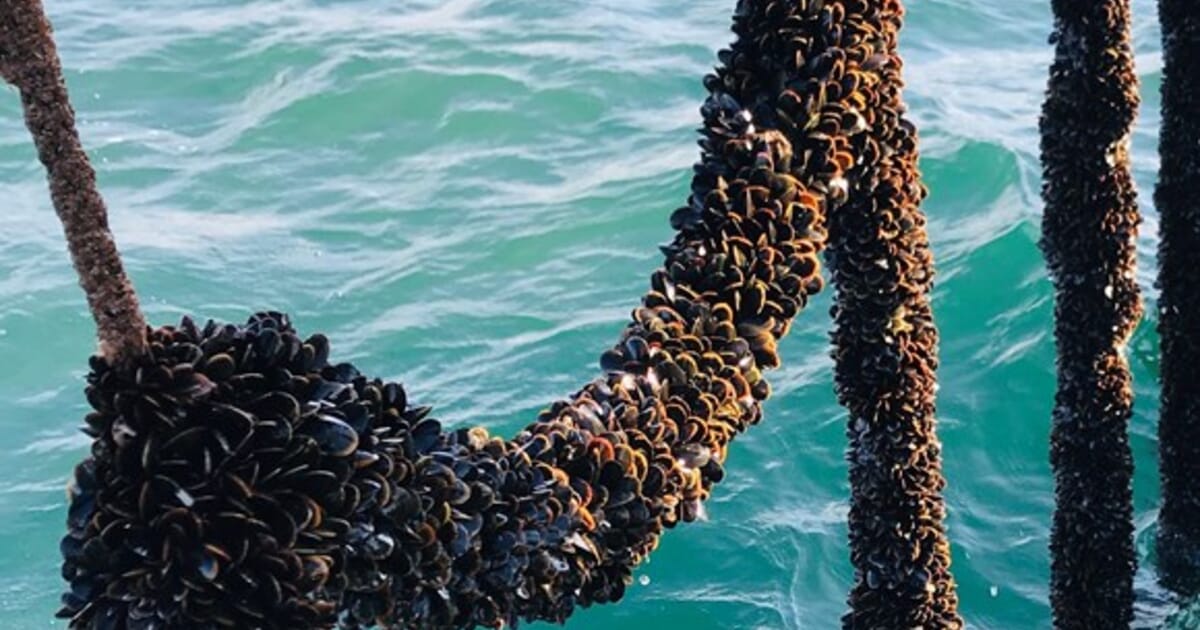£870,000 awarded to investigate impact of offshore aquaculture
£870000 awarded to investigate impact of offshore aquaculture The Fish Site


The Ropes to Reefs Project: Assessing the Sustainable Development Goals of the UK’s Offshore Mussel Farm

The Ropes to Reefs project aims to evaluate the broader benefits of the UK’s first large-scale offshore mussel farm, operated by Offshore Shellfish. This farm is situated in Lyme Bay, off the southern coast of Devon. The project will specifically investigate whether the farm has contributed to the enhancement of biodiversity and productivity in the area. It will also examine its impact on the habitats of other important fish species. The findings from this £870,000 initiative will play a crucial role in shaping ecosystem-based fisheries management in the future.
Project Leadership and Collaboration
The University of Plymouth, renowned for its expertise in marine conservation and innovative monitoring techniques, will lead the Ropes to Reefs project. The university has a longstanding partnership with Offshore Shellfish Ltd and will utilize a unique ten-year dataset generated through PhD studentships supported by the company. This collaboration also involves other key stakeholders in the UK offshore aquaculture industry, including Scallop Ranch Ltd, local seaweed farmer Biome Algae, the Shellfish Association of Great Britain, the Marine Management Organisation, the Fishmongers’ Company’s Fisheries Charitable Trust, Devon and Severn Inshore Fisheries and Conservation Authority, and Natural England.
This project aligns with the University of Plymouth’s ongoing efforts to monitor the Lyme Bay Marine Protected Area (MPA), which was designated in 2008 as the first and largest MPA of its kind in the UK.
Dr Emma Sheehan’s Vision
Dr Emma Sheehan, associate professor of marine ecology at the university, is leading the Ropes to Reefs project. She emphasizes the potential of offshore mussel farming to become one of the world’s most sustainable and large-scale sources of healthy protein. Beyond its role in providing a sustainable food source, Dr Sheehan believes that offshore aquaculture can offer additional benefits. By closely collaborating with the fishing and mussel farming industry and building on previous and ongoing research, the project aims to provide essential evidence regarding the impact of offshore aquaculture. This evidence will enable a comprehensive assessment of whether offshore aquaculture can serve as a nature-based solution that preserves, and potentially enhances, the health and productivity of our oceans.
SDGs, Targets, and Indicators
| SDGs | Targets | Indicators | |
|---|---|---|---|
| SDG 14: Life Below Water | Target 14.2: Sustainably manage and protect marine and coastal ecosystems | – Indicator 14.2.1: Proportion of national exclusive economic zones managed using ecosystem-based approaches | – Indicator 14.2.2: Progress by countries in the degree of implementation of international instruments aiming to combat illegal, unreported, and unregulated fishing |
| SDG 15: Life on Land | Target 15.5: Take urgent and significant action to reduce the degradation of natural habitats, halt the loss of biodiversity, and protect and prevent the extinction of threatened species | – Indicator 15.5.1: Red List Index | – Indicator 15.5.2: Proportion of important sites for terrestrial and freshwater biodiversity that are covered by protected areas, by ecosystem type |
1. Which SDGs are addressed or connected to the issues highlighted in the article?
The issues highlighted in the article are connected to SDG 14: Life Below Water and SDG 15: Life on Land.
2. What specific targets under those SDGs can be identified based on the article’s content?
Based on the article’s content, the specific targets that can be identified are:
- Target 14.2: Sustainably manage and protect marine and coastal ecosystems
- Target 15.5: Take urgent and significant action to reduce the degradation of natural habitats, halt the loss of biodiversity, and protect and prevent the extinction of threatened species
3. Are there any indicators mentioned or implied in the article that can be used to measure progress towards the identified targets?
Yes, there are indicators mentioned in the article that can be used to measure progress towards the identified targets:
- Indicator 14.2.1: Proportion of national exclusive economic zones managed using ecosystem-based approaches
- Indicator 14.2.2: Progress by countries in the degree of implementation of international instruments aiming to combat illegal, unreported, and unregulated fishing
- Indicator 15.5.1: Red List Index
- Indicator 15.5.2: Proportion of important sites for terrestrial and freshwater biodiversity that are covered by protected areas, by ecosystem type
The article mentions that the Ropes to Reefs project will assess the wider benefits of the offshore mussel farm in Lyme Bay, including its impacts on biodiversity and productivity. This aligns with Target 14.2 to sustainably manage and protect marine and coastal ecosystems. The indicators mentioned in the article, such as managing exclusive economic zones using ecosystem-based approaches and combating illegal fishing, can be used to measure progress towards this target.
The article also mentions that the project will investigate the impacts of the mussel farm on the habitats of other important fish species. This relates to Target 15.5 to reduce the degradation of natural habitats and protect biodiversity. The indicators mentioned in the article, such as the Red List Index and the proportion of important sites covered by protected areas, can be used to measure progress towards this target.
4. SDGs, Targets, and Indicators
| SDGs | Targets | Indicators | |
|---|---|---|---|
| SDG 14: Life Below Water | Target 14.2: Sustainably manage and protect marine and coastal ecosystems | – Indicator 14.2.1: Proportion of national exclusive economic zones managed using ecosystem-based approaches | – Indicator 14.2.2: Progress by countries in the degree of implementation of international instruments aiming to combat illegal, unreported, and unregulated fishing |
| SDG 15: Life on Land | Target 15.5: Take urgent and significant action to reduce the degradation of natural habitats, halt the loss of biodiversity, and protect and prevent the extinction of threatened species | – Indicator 15.5.1: Red List Index | – Indicator 15.5.2: Proportion of important sites for terrestrial and freshwater biodiversity that are covered by protected areas, by ecosystem type |
Behold! This splendid article springs forth from the wellspring of knowledge, shaped by a wondrous proprietary AI technology that delved into a vast ocean of data, illuminating the path towards the Sustainable Development Goals. Remember that all rights are reserved by SDG Investors LLC, empowering us to champion progress together.
Source: thefishsite.com

Join us, as fellow seekers of change, on a transformative journey at https://sdgtalks.ai/welcome, where you can become a member and actively contribute to shaping a brighter future.







